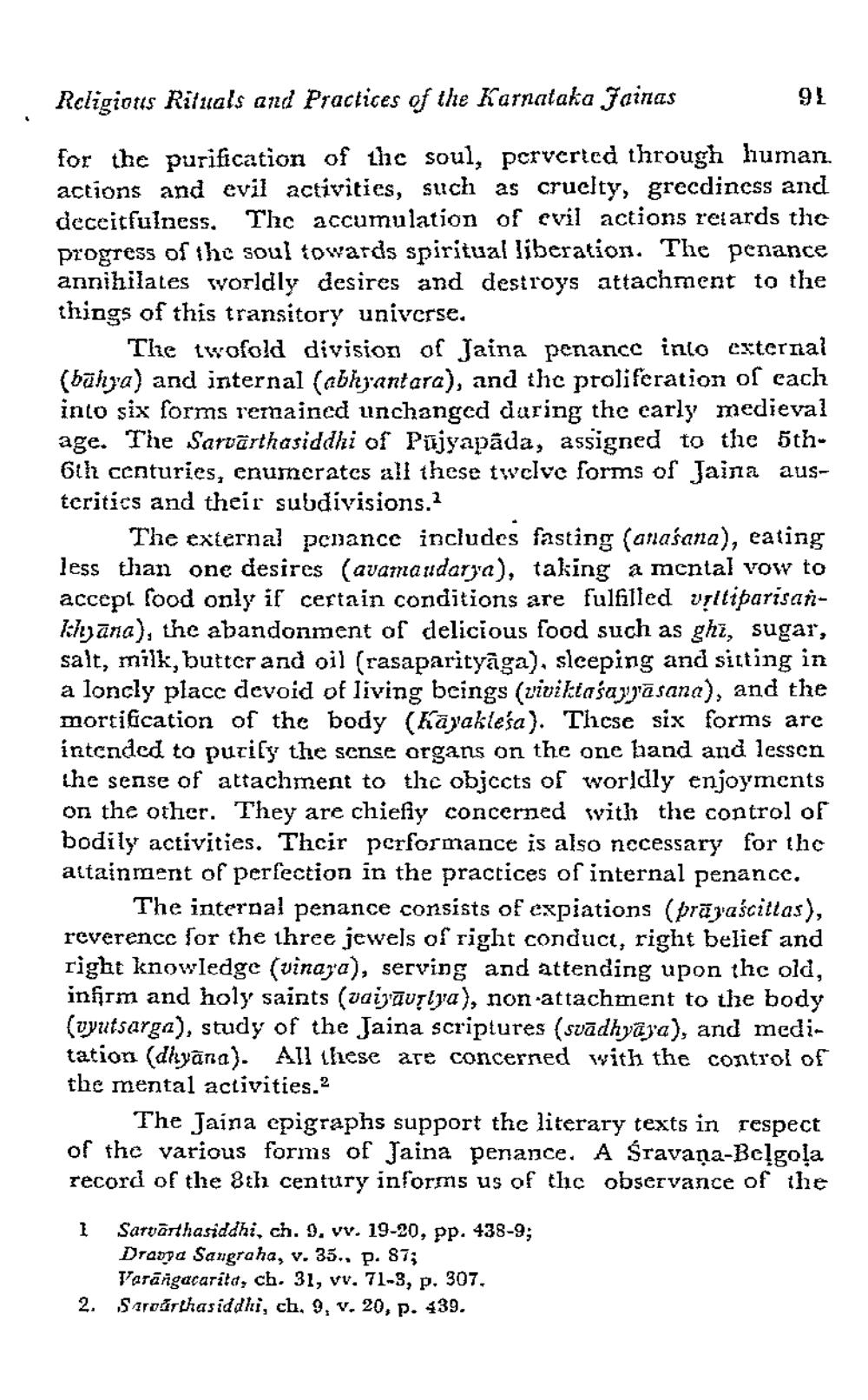________________
Religions Rituals and Practices of the Karnataka Fainas
91
for the purification of the soul, perverted through human. actions and evil activities, such as cruelty, grecdiness and deceitfulness. The accumulation of evil actions retards the progress of the soul towards spiritual liberation. The penance annihilates worldly desires and destroys attachment to the things of this transitory universe.
The twofold division of Jaina penance into external (bahya) and internal (abhrantara), and the proliferation of cach into six forms remained unchanged during the carly medieval age. The Sarvärthasiddhi of Pujyapāda, assigned to the 5th6th centuries, enumcrates all these twelve forms of Jaina austeritics and their subdivisions.
The external penance includes fasting (anaśana), eating less than one desires (avamandarya), taking a mental vow to acccpt food only if certain conditions are fulfilled vşltiparisankluana), the abandonment of delicious food such as ghi, sugar, salt, milk, butter and oil (rasaparityāga), siceping and sitting in a loncly placc devoid of living beings (viviktasaygasana), and the mortification of the body (Kayaklesa). These six forms are intended to purify the sense organs on the one hand and lessen the sense of attachment to the objects of worldly enjoyments on the other. They are chiefly concerned with the control of bodily activities. Their performance is also necessary for the attainment of perfection in the practices of internal penance.
The internal penance consists of expiations (präraścillas), reverence for the three jewels of right conduct, right belief and right knowledge (vinaza), serving and attending upon thc old, infirm and holy saints (vaijauflia), non-attachment to the body (vyutsarga), study of the Jaina scriptures (svādhyaya), and meditation (dhyāna). All these are concerned with the control of the mental activities.?
The Jaina epigraphs support the literary texts in respect of the various forms of Jaina penance. A Śravaņa-Beļgoļa record of the 8th century informs us of thic observance of the
Sarvarthasiddhi, ch. 9. vv. 19-20, pp. 438-9; Draupa Sangraha, v. 35., p. 87; Varāngacarita, ch. 31, vv. 71-3, p. 307, Saroarthasiddhi, ch, 9, v. 20, p. 439.
2.




